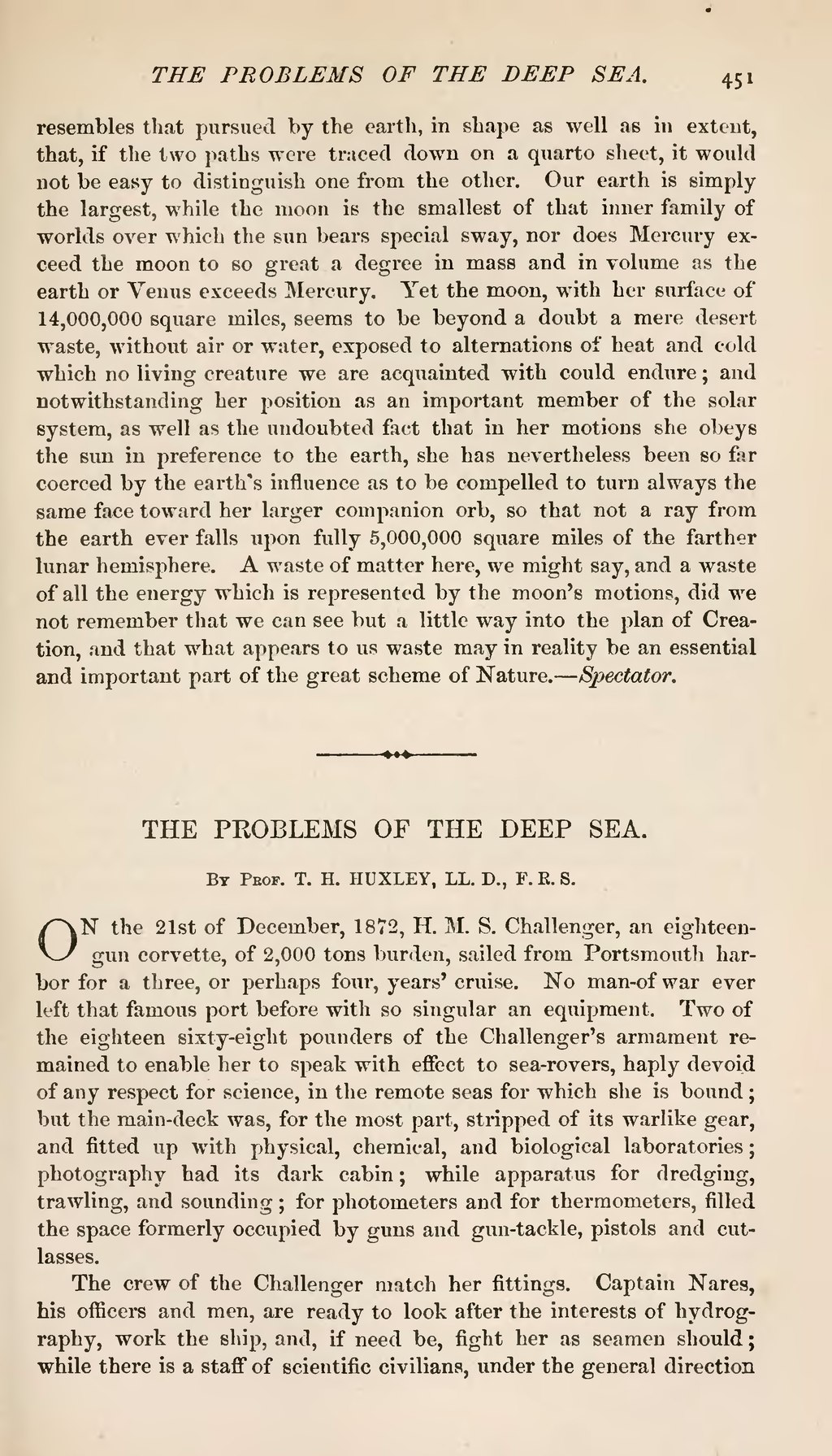resembles that pursued by the earth, in shape as well as in extent, that, if the two paths were traced down on a quarto sheet, it would not be easy to distinguish one from the other. Our earth is simply the largest, while the moon is the smallest of that inner family of worlds over which the sun bears special sway, nor does Mercury exceed the moon to so great a degree in mass and in volume as the earth or Venus exceeds Mercury. Yet the moon, with her surface of 14,000,000 square miles, seems to be beyond a doubt a mere desert waste, without air or water, exposed to alternations of heat and cold which no living creature we are acquainted with could endure; and notwithstanding her position as an important member of the solar system, as well as the undoubted fact that in her motions she obeys the sun in preference to the earth, she has nevertheless been so far coerced by the earth's influence as to be compelled to turn always the same face toward her larger companion orb, so that not a ray from the earth ever falls upon fully 5,000,000 square miles of the farther lunar hemisphere. A waste of matter here, we might say, and a waste of all the energy which is represented by the moon's motions, did we not remember that we can see but a little way into the plan of Creation, and that what appears to us waste may in reality be an essential and important part of the great scheme of Nature.—Spectator.
| THE PROBLEMS OF THE DEEP SEA. |
By Prof. T. H. HUXLEY, LL. D., F. R. S.
ON the 21st of December, 1872, H. M. S. Challenger, an eighteen-gun corvette, of 2,000 tons burden, sailed from Portsmouth harbor for a three, or perhaps four, years' cruise. No man-of war ever left that famous port before with so singular an equipment. Two of the eighteen sixty-eight pounders of the Challenger's armament remained to enable her to speak with effect to sea-rovers, haply devoid of any respect for science, in the remote seas for which she is bound; but the main-deck was, for the most part, stripped of its warlike gear, and fitted up with physical, chemical, and biological laboratories; photography had its dark cabin; while apparatus for dredging, trawling, and sounding; for photometers and for thermometers, filled the space formerly occupied by guns and gun-tackle, pistols and cutlasses.
The crew of the Challenger match her fittings. Captain Nares, his officers and men, are ready to look after the interests of hydrography, work the ship, and, if need be, fight her as seamen should; while there is a staff of scientific civilians, under the general direction
